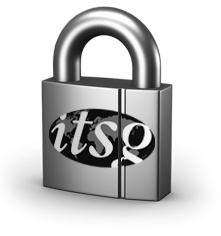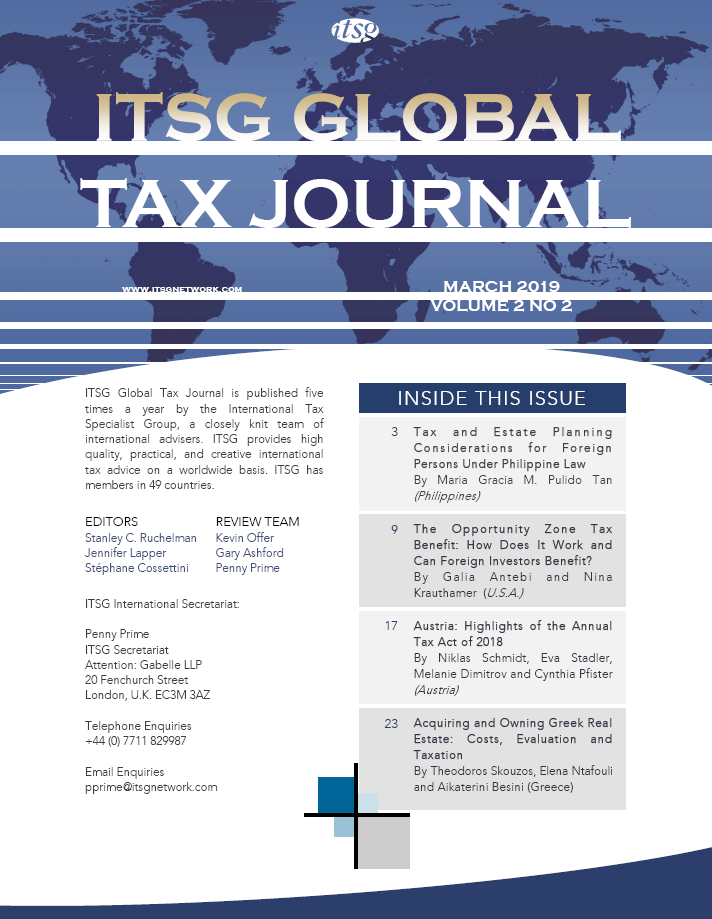State Aid, intended to entice investment and development in a specific region, is considered an unfair advantage and a violation of one of the central tenets of European law. In comparison, state funded assistance is often encouraged in the U.S., where Federal, state, and local governments typically offer tax benefits to businesses for the purpose of encouraging economic growth and investment in certain industries and geographic areas. To that end, the Tax Cuts and Jobs Act of 2017 (“T.C.J.A.”) added a significant tax break for investors realizing a liquidity event in the U.S.
Provided that the gain proceeds in excess of adjusted cost basis and recapture income are invested in a certain way in low-income communities, the gain from the liquidity event can be deferred and, in some circumstances, the appreciation on that investment can be completely free of Federal income tax. The provision is expected to unlock an estimated $6 billion or more for investment in “Opportunity Zones” located in low-income community census tracts.
The key to the tax deferral is a reinvestment in a “Qualified Opportunity Fund.” New Code §1400Z-2 provides for the following three tax benefits for investors using gain proceeds to invest in a Qualified Opportunity Fund:
- A temporary deferral of gain realized through the end of 2026 on a sale or exchange of any appreciated capital asset
- A step-up in basis for up to 15% of the deferred gain invested in the Qualified Opportunity Fund
- A complete exclusion for appreciation on the deferred gain if the investment in the Qualified Opportunity Fund is held for at least ten years
This provision appeals to investors wanting to enjoy the benefit of deferred tax and real estate developers and business owners wishing to raise capital. Both must have a long-term view for the investment, as the major tax benefit is obtained only after a ten-year holding period. Savvy investors are unlikely to tie up funds for that period of time or take the risk of investing in unfamiliar territory without considerable due diligence. Consequently, the Opportunity Zone arrangement incentivizes investments that make economic sense over the long haul in order to enjoy the desired tax benefits.
This article discusses the law, the proposed I.R.S. regulations published in October 2018, and the opportunity for non-U.S. investors who recognize U.S. taxation on F.I.R.P.T.A. gains.
a Qualified opportunity fund
Opportunity Zone
An Opportunity Zone is an economically distressed community that has been designated by any of the 50 states of the U.S. and certified by the I.R.S. Roughly 8,700 areas have been designated.1 Once the designation is approved, a Qualified Opportunity Zone retains its designation for ten years.
Qualified Opportunity Zone Funds
A Qualified Opportunity Fund is a U.S. investment vehicle organized as a domestic corporation or partnership, or the equivalent in a U.S. possession. Its purpose must be limited to making investments in qualified opportunity zone property (“Eligible Property”).
Eligible Property may take any of the following forms:
- Qualified Stock: Stock in a domestic corporation that operates a “Qualified Opportunity Zone Business” (as defined below) on the date of acquisition by an investor. The shares must be issued to an investor entirely for cash after 31 December 2017. The Qualified Opportunity Zone Business must continue to be carried on for substantially all of the Qualified Opportunity Fund’s holding period.
- Interest in a Qualified Partnership: A capital or profits interest in a domestic partnership that operates a Qualified Opportunity Zone Business on the date of acquisition by an investor. The partnership interest must be issued to an investor entirely for cash after 31 December 2017. The Qualified Opportunity Zone Business must continue to be carried on for substantially all of the Qualified Opportunity Fund’s holding period.
- Qualified Business Property: A tangible property acquired to be used in a Qualified Opportunity Zone Business and which (i) meets the “original use” test or the “substantial improvement” test and (ii) substantially all of the use of the tangible property was in a qualified Opportunity Zone during substantially all of the Qualified Opportunity Fund’s holding period.
Investment standard to be met
To be a Qualified Opportunity Fund, Eligible Property must be purchased after 31 December 2017 and must comprise at least 90% of the entity’s assets on average as measured on two dates each year. The measurement dates are the last day of the sixth and last months of the taxable year. Investments in other Qualified Opportunity Funds are not considered to be Eligible Property unless that other fund directly operates a Qualified Opportunity Zone Business.
If a Qualified Opportunity Fund prepares certified financial statements for investors and creditors, or is required to prepare such statements by the S.E.C. or another Federal agency other than the I.R.S., the carrying value of each class of asset reported in the certified financial statement may be used when making the computation. A Qualified Opportunity Fund that does not prepare certified financial statements may use the original cost of the assets in measuring for the 90% test.
This rule is designed to prevent funds from holding substantial cash prior to the start of a project. At the same time, in recognition that development projects deploy cash over the period of buildout, a safe harbour presented in the proposed regulations allows for a reasonable amount of working capital to qualify during a start-up period. Under such provision, prudent deployment of cash will not provide for disqualification of the fund.
If the 90% test isn’t met, the Qualified Opportunity Fund is subject to a penalty for each month in which the failure continues. There is an exception for reasonable cause.
Qualified Opportunity Zone business
To be a Qualified Opportunity Zone Business, a series of tests must be met:
- Substantially all of the property owned or leased by the business must be Qualified Business Property.
- At least 50% of its gross income must be from the active conduct of the business.
- A substantial portion of its intangible property must be used in the active conduct of the trade or business in the qualified Opportunity Zone.
- Less than 5% of the average unadjusted basis of all of its property may be attributable to nonqualified financial assets.
Qualified Business Property
As mentioned in the discussion of Eligible Property above, Qualified Business Property must be tangible and either its “original use” must commence with the entity or the property must be “substantially improved” by the entity. Additionally, substantially all of the property’s use must be in an Opportunity Zone for substantially all of the holding period maintained by the entity.
While the proposed regulations do not elaborate on the meaning of original use at this time, additional guidance is expected to be published by the I.R.S. Until such time, it is generally viewed by commentators that the purchased property must not have been used in the Opportunity Zone before it was purchased by the Qualified Opportunity Fund. Consequently, if an entity purchases new manufacturing equipment to be used in its Qualified Opportunity Zone Business, the equipment’s original use in the Opportunity Zone must commence with the Qualified Opportunity Fund. However, if an entity purchases an existing factory building in an Opportunity Zone, the original use of the property in the Opportunity Zone will not commence with the Qualified Opportunity Fund and the Qualified Opportunity Fund would be required to improve the building substantially for it to be treated as a Qualified Business Property.
A property is considered to be substantially improved if, at the end of a 30-month period, the adjusted basis of the property is more than double the original basis. For property located in an Opportunity Zone that is in need of capital improvement, purchasers are incentivized to negotiate a reduction in price in lieu of seller repair so that the capital improvement counts toward substantial improvement.
The proposed regulations use a standard of 70% when determining whether substantially all of the property owned or leased by an entity is Qualified Business Property. The 70% threshold applies in this context only, even though the phrase “substantially all” is used throughout the statute and the proposed regulations.
Exclusion of Certain Businesses
Certain businesses cannot be treated as Qualified Opportunity Zone Businesses. These include, inter alia, casinos, liquor stores, golf courses, and country clubs.
Working Capital Assets
In applying the nonqualified financial asset requirement, reasonable amounts of working capital held in cash, cash equivalent, or debt instruments with a term of no more than 18 months are excluded. The proposed regulations provide a safe harbour for determining whether working capital amounts are reasonable. The test is described below. If the safe harbour requirements are met, reasonable amounts of working capital will not be counted towards the 5% test, and income derived from such amounts will be counted towards the satisfaction of the 50%-gross income test.
The safe harbour treats working capital as reasonable in amount if the following conditions are met:
- There is a written plan that identifies the working capital assets as assets held for the acquisition, construction, or substantial improvement of tangible property in the Opportunity Zone.
- There is written schedule consistent with ordinary business operations, according to which the property will be used within 31 months.
- The business substantially complies with the written plan and the written schedule in the manner that it employs the assets.
To avoid adverse consequence from a de minimis failure of the asset test, the proposed regulations allow a business to be considered as meeting the asset test if it proceeds in a manner that is substantially consistent with the safe harbour requirements. Where that occurs, the business will be treated as meeting the intangible assets use test.
The proposed regulations also provide that if tangible property is expected to be substantially improved as a result of expending the working capital, an entity that meets the working capital safe harbour requirements will not be treated as failing to meet the Qualified Business Property requirements solely because the scheduled consumption of the working capital is not yet complete.
The Opportunity Zone tax benefits
Tax benefits
Two principal benefits are available to an investor in a Qualified Opportunity Zone Business after having recognized a substantial capital gain on an unrelated investment.
The first benefit is that tax on the capital gain from the disposed original investment can be deferred until the investment in the Qualified Opportunity Zone is disposed of or until 31 December 2026, whichever comes first. The amount that must be reinvested to obtain complete deferral of gain is the gain itself. Proceeds need not be invested to the extent attributable to cost basis or recapture income arising from the sale of depreciable property. Recapture income is the portion of the gain that is attributable solely to reductions in cost basis arising from depreciation or amortization deductions while the property was owned by the seller. This treatment differs from the requirement to invest the full proceeds in an exchange real estate transaction (swap).
The second benefit relates to the computation of tax basis in the Qualified Opportunity Fund and the taxation of the investment in the Qualified Opportunity Fund:
- As a corollary to tax deferral on the gain from the disposed original investment and the investment of the gain proceeds in the Qualified Opportunity Fund, the investment in the Qualified Opportunity Fund is given a zero basis at the time made. If more than the deferred gain is invested in the Qualified Opportunity Fund, the additional amount (including the proceeds attributable to basis recovery or recapture income) is treated as a separate investment which will not trigger a taxable event in 2026 and which cannot benefit from the tax-free appreciation after a ten-year holding period.
- The zero basis can be increased over time. If the investment in the Qualified Opportunity Fund is held for five years, the basis in the Qualified Opportunity Fund is increased by 10% of the deferred gain. Then, if the investment in the Qualified Opportunity Fund is held for two additional years, so that the total holding period is seven years, the basis in the Qualified Opportunity Fund is further increased by 5% of the deferred gain. At that point, the total tax exposure at the time deferral ends is reduced by 15% because the basis has been stepped up.
- If the taxpayer holds the interest in the Qualified Opportunity Fund on 31 December 2026, the deferred gain inherent in the investment in the fund is recognized. If the fair market value of the interest in the Qualified Opportunity Fund is less than the deferred gain, the gross amount realized will be equal to fair market value. If the basis in the fund has been increased at the fifth and seventh years as discussed above, the gain on 31 December 2026, amounts to only 85% of the originally deferred gain. The gain recognized at this time results in an increase in the basis of the interest.
- Finally, gain from the disposition of the interest in the Qualified Opportunity Fund will be deemed to be zero if the interest in the fund has been held for ten years or more at the time of the sale. Gain is zero because the basis in the Qualified Opportunity Fund is stepped up to is fair market value on the date of sale. This benefit is elective.
In sum, an investor who takes advantage of the various opportunity zone benefits can defer tax on the gain from the unrelated investment until 31 December 2026 by investing in a Qualified Opportunity Fund. At the same time, the gain derived from a ten-year holding and sale of the Qualified Opportunity Fund becomes tax-free. In all instances, a mandatory recognition of the deferred gain – capped at the excess of fair market value over basis – will take place on 31 December 2026, or sooner if there is an early disposition of the interest in the Qualified Opportunity Fund. At that time, if no corresponding disposition takes place, the investor will be obligated to pay tax on the phantom gain and should plan to have cash available.
Eligible taxpayers (including non-U.S. taxpayers)
The proposed regulations provide that any person who is required to report recognized gains is eligible for the deferral benefit. This includes individuals; C-corporations, including R.I.C.’s and R.E.I.T.’s; L.L.C.’s; partnerships; S-corporations; trusts; and estates.
The Code and the proposed regulations do not limit eligible taxpayers to U.S. taxpayers. Accordingly, non-U.S. persons, including foreign trusts2, may benefit from the provision as long as the investment arise from funds that would be gains for U.S. Federal income tax purposes but for the Opportunity Zone tax provision.
While non-U.S. persons generally do not recognize capital gains on the disposition of U.S. stocks and securities, a non-U.S. person may recognize capital gains under F.I.R.P.T.A. in connection with the disposition of a taxable U.S. real property interest (“U.S.R.P.I.”) and, following recent tax reform, on the disposition of an interest in partnerships engaged in business in the U.S. The Code and the proposed regulations do not address the withholding obligations applicable to non-U.S. persons on any gain realized under F.I.R.P.T.A. and the new provision applicable to a sale of a partnership interest. Since the gross consideration may be subject to 15% F.I.R.P.T.A. withholding, or to the new 10% withholding on the sale of a partnership interest, foreign taxpayers may find it complicated to utilize the new provision without advance planning.
For those non-U.S. persons who take steps to plan, the key step will involve filing a timely application with the I.R.S. requesting a withholding certificate to eliminate withholding tax. There is no doubt that this would impose some complications. The full extent is unknown at this time. The process to obtain an I.R.S. withholding certificate normally takes 90 days and first requires the issuance of a U.S. Tax Identification Number, which may take time. Well-advised taxpayers who plan in time may still be able to invest the proceeds within the required 180 days and reap the benefits of the new provision.
Note, that in addition to the general eligibility of non-U.S. persons, it is common for non-U.S. persons to use U.S. structures, specifically U.S. domestic trusts, to benefit family members who are U.S. citizens or resident. These structures can surely benefit from the provision when cashing out on appreciated portfolios comprised of taxable assets.
Eligible capital gain
As indicated earlier, the opportunity to defer tax is limited to the portion of gain treated as capital gain for U.S. Federal income tax purposes. This includes gain from a deemed sale or exchange of a capital asset or a depreciable asset used in a trade or business in the U.S. for which gain is treated as capital gain but excludes the portion of the gain attributable to basis reductions arising from the claim of depreciation or amortization deductions. That portion is recaptured as ordinary income.
There is no limitation on the benefit based on the source of the gain other than that the gain must be taxable, which is a rare occurrence for non-U.S. persons. In the limited circumstances where it occurs, foreign-source gains may be taxed outside the U.S. and, with certain exceptions, those taxes may be available to offset a U.S. tax liability under the foreign tax credit provisions of U.S. tax law.
Requirements to defer tax by investing in a Qualified Opportunity Fund
To receive the tax deferral benefit, taxpayers must fulfil certain requirements:
- Sell an appreciated capital property to an unrelated person before 31 December 2026.3
- Make an election to defer the gain (or the invested amount, if lower) in the tax return for the year of the sale.
- Not have another election to defer the tax in effect with respect to the same sale or exchange.
- Invest the deferred gain in one or more Qualified Opportunity Funds within 180 days from the day of the disposition.
While the tax is deferred, the disposition transaction must be reported in the year it was made on Form 8949, Sales and Other Dispositions of Capital Assets, which will also be used to make the election to defer the tax, pending further instructions from the I.R.S.
The proposed regulations clarify that a second election with respect to the same transaction does not violate the rule against multiple elections as long as not all of the gain was previously deferred. For example, assume a taxpayer has $1,000,000 in capital gains and makes an election to defer $500,000, which is invested in a Qualified Opportunity Fund in a timely manner. The taxpayer is permitted to elect, within the timeframe allowed, to defer recognition of the balance of the gain.
Tax attributes of gain recognized
The tax attributes of capital gains deferred under the provision are preserved. Those include the holding period determining whether the gains are short-term or long-term. The proposed regulations provide ordering rules that address a fact pattern in which a taxpayer disposes a portion, but not all, of an interest in a Qualified Opportunity Fund when not all the gain invested has the same attributes. An example might involve sales of several assets, some producing short-term gains and others producing long-term gains through an investment in a single Qualified Opportunity Fund. Under these rules, the “first in first out” (“F.I.F.O.”) method is applied. In certain circumstances when the F.I.F.O. method is insufficient, a pro rata method may be applied.
Expiration of the Opportunity Zone designation
The Federal designation as an Opportunity Zone expires on 31 December 2028. Therefore, investments made after 31 December 2018, and for which taxpayers wish to benefit from the ten-year fair market value step up, must be sold or disposed of after the designation has expired. The proposed regulations clarify that as long as the investment is disposed of before 31 December 2047, the expiration of opportunity zone status will not create a problem for taxpayers electing to step up the basis of their investment to its fair market value.
sample Application4
The application of the new provision is best illustrated through an example.
In October 2018, a taxpayer sells appreciated property that is not depreciable and is not a collectible for which higher capital gains tax is due. The taxpayer realizes a gain of $1,000,000. No tax is paid in 2018 on the gain because within 180 days, the taxpayer invests the full amount into a Qualified Opportunity Fund.
Assume the investment in the Qualified Opportunity Fund is sold in less than five years for $1,200,000 and all tax rates remain the same as in effect in 2019. The following will apply:
- The amount realized is $1,200,000.
- The basis in the investment is zero.
- The gain realized is $1,200,000 - $0 = $1,200,000.
- The tax due is $240,000.
Now assume the investment in the Qualified Opportunity Fund is sold prior to 2026, after it was held for more than five years but less than seven years, for $1,200,000 and all tax rates remain the same as in effect in 2019. The following will apply:
- The amount realized is $1,200,000.
- The basis in the investment is $100,000 (deferred gain of $1,000,000 x 10%).
- The gain realized is $1,100,000 ($1,200,000 - $100,000 = $1,100,000).
- The tax due is $220,000.
Now assume the investment in the Qualified Opportunity Fund is sold before 31 December 2026, when it was held for more than seven years but less than ten years, for $1,200,000 and all tax rates remain the same as in effect in 2019. The following will apply:
- The amount realized is $1,200,000.
- The basis in the investment is $150,000 (deferred gain of $1,000,000 x 15%).
- The gain realized is $1,050,000 ($1,200,000 - $150,000 = $1,050,000).
- The tax due is $210,000.
Now assume the investment in the Qualified Opportunity Fund is held on 31 December 2026, when it was held for more than seven years. The fair market value of the property is $1,200,000, and all tax rates remain the same as in effect in 2019. The following will apply:
- The amount realized is $1,200,000.
- The basis in the investment is $150,000 (deferred gain of $1,000,000 x 15%).
- The gain realized is $1,050,000 ($1,200,000 - $150,000 = $1,050,000).
- The tax due is $210,000.
- The tax must be paid with taxpayer’s own funds on hand.
Now assume the investment in the Qualified Opportunity Fund is sold in 2028 for $2,200,000 and all tax rates remain the same as in effect in 2019. The following will apply:
- The amount realized is $2,200,000.
- The basis in the investment is $2,200,000 (equal to the fair market value of the fund).
- The gain realized is $0 ($2,200,000 - $2,200,000 = $0).
- The tax due is $0.
For comparison, if the taxpayer invested in a private equity fund that isn’t a Qualified Opportunity Zone Fund, the $200,000 tax due on the $1,000,000 gain realized in 2018 would have been due in 2018. Only the net amount of $800,000 would have been available for investment, and the appreciation would have been fully taxed.
conclusion
The advent of the Opportunity Zone has created a huge commotion. It is viewed by many as one of the biggest tax benefits offered in the history of the U.S.
Yet, many have criticized the provision – claiming that, despite the well-intended mission, capital investments in distressed areas could end up benefiting cities that are already experiencing growth. This is the case in Long Island City, an Opportunity Zone in New York, one of the country’s most prosperous cities. The area has already seen extensive development of new luxury rental buildings for the city’s professionals. The trend is not expected to stop, even after Amazon pulled back its plans to build a new HQ2 there. In fact, this provision is likely to make it easier for developers in the area to raise funds.
Ultimately, though the tax benefits are great, it remains to be seen whether the stir around Opportunity Zones is justified. The holding period requirement is significant; unlike Long Island City, many of the Opportunity Zones are unfamiliar territories; and substantial improvement requirements could double the cost of the property, consuming funds that might otherwise not be spent on improvement and which could ultimately reduce the anticipated yield of a project.
1 The U.S. Treasury Department provides a wealth of Opportunity Fund Resources, including a full list of designated zones and a map.
2 Certain U.S. trusts controlled by foreign persons have seen a rise in popularity in recent years, following the implementation of the C.R.S. These trusts are generally taxed as foreign (non-U.S.) trusts for U.S. tax purposes.
3 In determining whether two persons are related, certain modified constructive ownership rules apply.
4 For ease of computation, the example uses a 20% Federal rate and does not apply the 3.8% N.I.I.T.

 Login
Login





















































